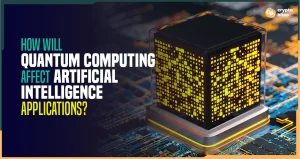
Is DAG Better Than Blockchain? – DAG vs. Blockchain 2023
Directed Acyclic Graph tech could be the replacement to blockchain. Touted on social media as the next big thing, ready to solve the blockchain trilemma But, is it going to?
This debate has been buzzing and spreading across the internet like wildfire. Crypto nerds can’t stop talking, speculating, and arguing about how the ‘blockchain killer’ is here to take over. Is Blockchain’s dominance as the top Distributed Ledger Technology (DLT) in danger?
Only time will tell what the future looks like for crypto, the blockchain and DeFi.
But, let’s cut the BS and take a look at these two to understand why some users choose DAG over blockchain and vice versa.
DAG vs. Blockchain – Which One is Better?
Blockchain launched back in 2008. Over the past 10 years, the blockchain has faced little to no competition from other DLTs in the DeFi sector.
It was all milk and honey for Blockchain tech. That is, until Directed Acyclic Graph Technology (DAG) appeared on the scene.
Now, many cryptocurrency enthusiasts believe that DAG is the foreseen saviour. It’s here to overcome the challenges that have overwhelmed the blockchain. Miners, transaction limitations, unpredictable gas fees, scalability caps, and speed limits. All a thing of the past.
It’s fair to ask whether blockchain will be the #1 cryptocurrency DLT globally a decade from now?
Directed Acyclic Graph Technology (DAG) – How it Works
In a nutshell, Directed Acyclic Graph (DAG) is a distributed and decentralized structure. It’s used in crypto to initiate and record token transactions from one crypto wallet to another in a digital ledger. But, its data structuring is very different from the blockchain’s system.
DAG’s data structure comprises of edges (lines) connecting nodes (vertices) to and fro without creating a defined cycle. The network of nodes handles confirming and validating transactions. To grasp what DAG’s data modeling looks like, visualize it as spheres connected by lines or edges.
How does the DAG tech work?
DAG tech uses the edges and nodes to refer to older, encrypted transactions made across the particular network. Prior encrypted transactions on the user’s network appear as nodes on the system.
To confirm and record a new transaction, the system must create and refer to at least TWO earlier transactions. The system creates fresh nodes for new transactions. And, it uses previous transactions for validation. This is all done without human intervention.
The best part about DAGs is that the system allows more users and transactions executed per second. Plus, it has proven to solve blockchain’s decentralization problems. Especially in the encryption sector regarding speed and scalability.
To add the icing on the cake, the absence of miners and blocks has cut down on the unpredictable transaction fees. .
Directed Acyclic Graph (DAG) & Blockchain Similarities
Both Distributed Ledger Technologies have several common characteristics, yet distinctive differences separate them. Like blockchain, the DAG tech can be distributed or decentralized. It also supports ‘smart contracts’ as well.
Moreover, both systems record crypto transactions on publicly-viewable digital ledgers and use references from prior transfers to validate a new one. The duo has a token-economic-induced mechanism. Regardless of the critical features the blockchain and DAG have in common, the two don’t see eye to eye.
Benefits of Directed Acyclic Graph Tech (DAG)
Absence of Miners
The absence of miners and the mining process to validate transactions is a big win for the DAG community. Companies switching sides from blockchain to DAGs since miners have been a major limitation. The slower validation process hinders efficiency when it comes to transacting.
DAG technology requires no human intervention during transaction validation and data recording. This means no ‘block time’ or ‘miners fees.’
Transaction SPEED
Because DAG technologies are faster and flawless, you can forget about long block times . The unique structure of a Directed Acyclic Graph tech brings you easy scalability during consecutive transfers since payments are validated almost immediately. That means more transactions per second for the user, thus enhancing adequate throughput.
Cost Effectiveness
Transacting tokens is significantly cheaper when done on a Directed Acyclic system, compared to blockchain. DAGs have tossed out the fear of high and unpredictable transaction fees. This eases the pressure merchants face when making multiple transactions.
Energy Efficient Mechanisms
DAG’s consensus mechanism is the antithesis of blockchain’s PoW protocol, known for its high-energy consumption. Directed Acyclic Graphs are more eco-friendly, known for their low energy consumption levels during transactions and data recording processes. Ongoing global climate change awareness is bringing public pressure on blockchain tech.
Differences Between DAG and Blockchain
| BLOCKCHAIN | DAG | |
| Launch Date | Launched in 2008 | Launched in 2015 |
| Transaction Validation | Blockchains and Miners Validation | Double Parent Transactions |
| Consensus Mechanism | ‘Proof of Work’ Consensus | Validating TWO prior transactions |
| Data Structure | A Chain of transaction Blocks | Graph structure made of Edges connecting multiple Nodes |
| Transaction Speed | Slower (Due to Block time intervals between transactions) | Faster (Simultaneous transaction validation) |
| Large Payments | Adaptable to large payments (Easy and more secure) | Not built for Large payments (Semi-centralized system nature) |
| Cost Effectiveness | High Transaction Fees (Expensive) | No Unpredictable Transaction Fees (Cheaper) |
| P2P Energy Transfers | Doesn’t support P2P trading | Supports P2P energy trading |
| Internet of Things (IoT) | Doesn’t Support IoT | Supports IoT |
| Microtransactions | Doesn’t Support | Supports microtransactions |
| Popular Networks | Bitcoin, IOTA, Ethereum | Tangle, NXT, Byteball |
Is DAG the future of Crypto?
Before we call it a day, lets clarify that Blockchain and DAG are amongst other Distributed Ledger Tech variations available in the crypto market. While sharing a few similarities, they also possess unique strengths and superiorities. Ultimately, they’re both outstanding technologies.
But, will another advanced tech surfaces in the future to claim the throne? Who Knows! You can never tell the future, especially in the crypto world. The cryptocurrency market has always done everything to prove everyone wrong with its unpredictability.
DAG vs. Blockchain Frequently Asked Questions
1. Is DAG better than blockchain?
In many ways, absolutely! It appears that DAGs hold the advantage over blockchain. There’s no block time, nor miners’ intervention, in Directed Acyclic Graph tech. Thus a faster consensus, and more reliable transactions than the blockchain network.
2. Will Directed Acyclic Graph Technology Replace Blockchain?
It’s unlikely to happen any time soon since many people have a bond with the traditional Bitcoin blockchain. DAG will, however, highly favor large-scale businesses and a fraction of users who prefer predictable transaction fees and fast, simultaneous transactions.
3. Is DAG a consensus mechanism?
Yes, it is. DAG’s consensus algorithm used by IOTA is ‘Tangle.’ To make a transaction here, you must validate two transactions you’ve previously received. So it’s a 2-for-1, pay-it-forward consensus which strengthens the transaction’s validity as they keep coming in.
4. Which is better between DAG and Blockchain DLT?
Choosing DAG over Blockchain or vice versa really depends on the use cases. Directed Acyclic Graph tech is considered better since transactions here are faster and more scalable. Plus, all transaction fees are predictable, unlike the blockchain system.
5. Why use DAG vs. Blockchain?
Suppose you’re going for transaction speed, predictable fees, and easy scalability. In that case, you’d love to use DAG since it allows you to make multiple transactions simultaneously. No miners or block time to keep you waiting.
6. What are the Advantages of DAG over other DLTs?
DAGs stand out from other Distributed Ledger Technologies because of the higher transaction validation speed (no miners or block time), high scalability, and, most importantly, its cost-effectiveness regarding transaction fees.
7. What technology is better than blockchain?
DAG is advanced and better than the blockchain network, which takes longer to validate simultaneous transactions. As a result, DAG systems reach consensus faster. In addition, they are cost-effective compared to blockchain based on unpredictable transaction fees charged.
8. Does DAG have Smart Contracts?
Just like its competitors, DAGs are Smart contracts supportive. Therefore, Directed Acyclic Graphs are adaptable to various Decentralized Finance systems. Furthermore, transactions on DAG are recorded on publicly accessible digital ledgers, which can’t be altered or changed.
9. Is DAG Decentralized?
Absolutely! DAG tech is a distributed and Decentralized system that records transactions on a digital ledger. However, it uses a differently structured data storage system than other DLTs.




